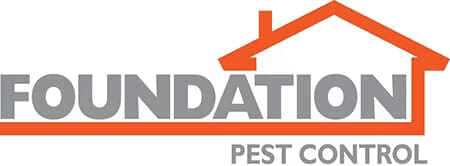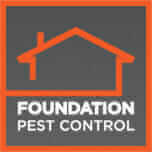The 5 Termite Types You Need to Know About
5 Termite Types Every Tennessee Homeowner Needs to Know (And How to Keep Them Out!)
Let’s talk about termites. Yeah, I know—it’s not exactly cocktail party material. But if you own a home in Tennessee, termites are one of those things you need to think about. These tiny wood-munchers are sneaky, destructive, and love our warm, humid climate just as much as we do. And trust me, by the time you actually see them, they’ve probably been chewing through your house for months—sometimes even years.
But don’t freak out just yet! Understanding which termites call Tennessee home and how they behave can be a game-changer. So, let’s dive into the five termite types you’re most likely to bump into in Tennessee—and how to stop them from turning your house into their all-you-can-eat buffet.
Types Of Termites In Tennessee
1. Eastern Subterranean Termites — Tennessee’s Unseen Wrecking Crew
Where they hang out: Underground, building mud tubes up to your home’s foundation.
Why they’re bad news: These guys are the most common termites in Tennessee, and they’re responsible for millions of dollars in damage every year. They’re sneaky, too—they work underground, building little mud highways to your house, so you won’t notice them until you start seeing real damage.
Red flags to look out for:
- Thin, muddy tunnels climbing your foundation or basement walls
- Wood that sounds hollow when tapped (tap, tap… thunk!)
- Swarms of winged termites near windows or doors, especially in spring
Pro tip: If you see mud tubes around your foundation, don’t ignore them. These are like termite highways leading straight to your house.
Imagine them as tiny contractors—except instead of building your dream home, they’re tearing it apart one bite at a time.
2. Formosan Termites — The Super Termites You Really Don’t Want
Where they hang out: Soil, walls, attics, trees—basically wherever they want.
Why they’re bad news: If Eastern Subterranean termites are bad, Formosan termites are their evil twins. Known as “super termites,” they’re aggressive, fast breeders, and can chew through wood, drywall, and even thin metal—yes, metal. While they’re more common in the Deep South, Tennessee has seen its fair share of these invaders.
Red flags to look out for:
- Mud nests in walls or attics (they love hiding out in dark spaces)
- Huge swarms of flying termites during warm, humid evenings
- Hollow-sounding wood or sagging floors
Wild fact: Formosan termites can set up entire colonies inside your walls without ever touching the soil. It’s like they’ve figured out how to Airbnb your house—rent-free.
Bottom line: If you see them, call in the pros. Like, yesterday.
3. Drywood Termites — The Furniture Hitchhikers
Where they hang out: Dry wood, like attic beams, hardwood floors, or even antique furniture.
Why they’re bad news: Unlike their soil-dwelling cousins, Drywood termites don’t need moisture from the ground. They move right into dry, solid wood and set up camp. While they’re not as common in Tennessee, they sometimes make their way here inside furniture or wood products. Think of them as the sneaky cousin who shows up uninvited and never leaves.
Red flags to look out for:
- Piles of tiny, sand-like pellets (termite poop, aka “frass”) near wooden furniture or baseboards
- Bubbling paint or tiny kick-out holes in wood
- Hollow-sounding or brittle wood
Quick tip: Love a good antique market? Same. But before you bring that vintage oak desk home, check it for Drywood termites. They love a free ride.
4. Dampwood Termites — The Moisture-Loving Pests
Where they hang out: Water-damaged wood, basements, leaky roofs, or damp crawl spaces.
Why they’re bad news: Dampwood termites, as their name suggests, love soggy wood. While they’re not super common in Tennessee, they’re drawn to places where moisture is an issue. If your basement floods every time it rains or you’ve got a leaky pipe that hasn’t been fixed, you might be rolling out the red carpet for these guys.
Red flags to look out for:
- Wood that feels spongy or crumbles easily
- A musty, moldy smell in crawl spaces or basements
- Swarms of winged termites near outdoor lights in the summer
Pro tip: Dampwood termites are basically the termites’ version of foodies—they’re picky. If your wood is dry and your home is well-ventilated, they’ll move on. So, keep your gutters clean, fix leaks fast, and ventilate those crawl spaces.
5. Conehead Termites — The Outlaws of the Termite World
Where they hang out: Above ground—trees, shrubs, fences, and yes, homes.
Why they’re bad news: Most termites are shy, preferring to sneak around underground. Not Conehead termites. These guys are bold. They build visible mud tubes, forage above ground, and can create massive colonies super quickly. Originally from the Caribbean, they’ve made their way to the southeastern U.S. and are slowly creeping toward Tennessee.
Red flags to look out for:
- Mud tubes on trees, fences, or the sides of buildings
- Visible nests in shrubs or yards
- Termite swarms during warm, rainy weather
Fun fact: They’re called “Conehead” termites because of their cone-shaped heads—but there’s nothing cute about them. They’re aggressive and destructive, and they don’t follow the typical “stay underground” termite playbook.
So, How Do You Keep These Tiny Terrors Out?
Good news—there are simple steps you can take to avoid a termite nightmare:
- Get regular termite inspections. Especially in spring when termites like to swarm.
- Keep wood away from your home’s foundation. Firewood, mulch, and even dead tree stumps can attract them.
- Fix leaks ASAP. Termites love moisture. Leaky roofs, dripping faucets, and clogged gutters are basically a termite’s love language.
- Seal the cracks. Tiny gaps around doors, windows, and your foundation are easy entry points.
- Invest in a professional termite treatment plan. DIY is great for some things—termite control isn’t one of them.
Tennessee’s Termite Reality Check
Here’s the thing: Termites are a huge issue in Tennessee because of our humid weather. They thrive in it. Even if you don’t see them, they could already be there, chewing away inside your walls.
The good news? Early detection and prevention can save you thousands of dollars. If you’re seeing mud tubes, wings by the windows, or suspicious wood damage, don’t wait—get an inspection.
Worried About Termites? We’ve Got Your Back.
At Foundation Pest Control, we know termites—and more importantly, we know how to get rid of them. Our team specializes in termite inspections, treatments, and prevention strategies tailored specifically for Tennessee homes.
Don’t let termites turn your house into their next big meal. Give us a call today and let’s kick them out before they settle in.

